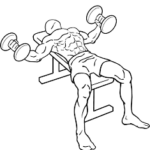In today’s rapidly evolving world, patient care tech has become a cornerstone of innovation in almost every industry, and healthcare is no exception. patient care tech, often referred to as patient care tech, is transforming the way healthcare is delivered. From diagnostic tools to telemedicine, advancements in technology are enhancing the quality, accessibility, and efficiency of patient care.
This article delves into what patient care tech entails, its components, benefits, challenges, and the exciting future it holds.
What is Patient Care Tech?
Patient care tech encompasses a broad range of technologies designed to improve healthcare delivery. These include digital tools, devices, and systems aimed at assisting healthcare providers and empowering patients. By leveraging innovative solutions, patient care tech enhances the accuracy of diagnoses, simplifies treatment processes, and boosts patient satisfaction.
Whether it’s a wearable health monitor tracking vital signs in real-time or AI algorithms assisting in disease detection, patient care technology is revolutionizing how medical services are provided and received.
Key Components of Patient Care Tech
1. Electronic Health Records (EHRs)
EHRs are digital versions of patient medical histories that have replaced traditional paper records. They allow healthcare providers to access, update, and share patient data seamlessly. With EHRs, doctors can retrieve test results, prescriptions, and treatment plans instantly, ensuring more efficient and informed decision-making.
2. Telemedicine Platforms
Telemedicine has emerged as a game-changer, especially during the COVID-19 pandemic. These platforms enable remote consultations, allowing patients to connect with healthcare providers via video calls, phone calls, or chat applications. Telemedicine is particularly beneficial for individuals in rural areas or those unable to visit hospitals due to mobility issues.
3. Wearable Health Devices
Wearables such as fitness trackers, smartwatches, and continuous glucose monitors are revolutionizing preventive healthcare. These devices collect data on heart rate, activity levels, sleep patterns, and more, enabling patients and doctors to detect potential health concerns early and take corrective measures.
4. Robotics in Surgery
Robotic-assisted surgeries are bringing precision and consistency to medical procedures. For example, the da Vinci Surgical System allows surgeons to perform minimally invasive surgeries with enhanced dexterity. These procedures often result in shorter recovery times, reduced complications, and improved outcomes.
5. Artificial Intelligence (AI) and Machine Learning (ML)
AI and ML are at the forefront of patient care tech innovation. From analyzing medical images to predicting disease outbreaks, these technologies are making healthcare more proactive. For instance, AI-powered tools can identify cancerous cells in imaging scans with greater accuracy and speed than traditional methods.
6. Remote Patient Monitoring (RPM)
RPM involves using digital devices to monitor patients’ health outside of clinical settings. Devices like blood pressure monitors, pulse oximeters, and ECG patches enable continuous health tracking, ensuring timely interventions when abnormalities are detected.
Benefits of Patient Care Tech
The adoption of patient care technology brings a multitude of advantages for both healthcare providers and patients:
1. Improved Accuracy in Diagnosis and Treatment
Advanced diagnostic tools reduce human error, ensuring accurate results and appropriate treatments. For example, AI algorithms can analyze symptoms and medical histories to suggest the most effective treatment plans.
2. Enhanced Accessibility
Telemedicine and wearable devices make healthcare more accessible to underserved populations. Patients no longer need to travel long distances to consult a specialist or undergo regular checkups.
3. Cost-Effectiveness
By reducing hospital stays, unnecessary tests, and readmissions, technology significantly lowers healthcare costs. Remote monitoring, for instance, helps manage chronic conditions without frequent visits to healthcare facilities.
4. Empowered Patients
Patient care tech encourages individuals to take charge of their health. Wearables, for example, provide real-time data that motivates users to adopt healthier lifestyles.
5. Streamlined Workflow for Healthcare Providers
Automation tools and EHRs streamline administrative tasks, allowing healthcare professionals to focus more on patient care. This improves overall efficiency and reduces burnout among medical staff.
Challenges in Implementing Patient Care Tech
Despite its numerous benefits, integrating patient care technology into healthcare systems is not without challenges.
1. Privacy and Security Concerns
Storing sensitive medical data digitally exposes it to potential cyberattacks. Healthcare providers must invest in robust cybersecurity measures to protect patient information.
2. High Initial Costs
Many advanced technologies require substantial initial investments in equipment, training, and infrastructure. Smaller healthcare facilities may find it challenging to adopt these technologies.
3. Learning Curve
Healthcare professionals need to be trained to use new technologies effectively. Without proper training, the benefits of patient care tech cannot be fully realized.
4. Regulatory Hurdles
The healthcare industry is heavily regulated, and introducing new technologies often requires compliance with stringent laws and guidelines. This can slow down the adoption of innovative solutions.
Real-World Examples of Patient Care Tech
1. Remote ICU Monitoring
ICU patients require constant monitoring, which can be resource-intensive. Remote ICU systems use cameras and sensors to monitor patients around the clock, reducing the workload on healthcare staff.
2. Virtual Reality (VR) for Pain Management
VR is being used to distract patients from pain during medical procedures or rehabilitation. Immersive VR experiences can help reduce anxiety and discomfort, making treatments more bearable.
3. 3D Printing in Healthcare
3D printing technology is being used to create customized prosthetics, implants, and even organs. This ensures a perfect fit for individual patients, improving the effectiveness of treatments.
The Future of Patient Care Tech
The future of patient care technology is brimming with possibilities. Emerging trends and innovations are set to redefine how healthcare is delivered.
1. Artificial Intelligence and Predictive Analytics
AI will become even more integrated into patient care, helping predict diseases before symptoms arise. Predictive analytics will enable personalized treatment plans based on individual genetic profiles and lifestyle data.
2. Blockchain for Data Security
Blockchain technology can revolutionize the way patient data is stored and shared. Its decentralized nature ensures data security while allowing seamless access for authorized personnel.
3. Internet of Medical Things (IoMT)
IoMT refers to interconnected medical devices that collect and share health data. These devices will create a comprehensive ecosystem, allowing doctors to monitor patient health in real-time.
4. Enhanced Telehealth Capabilities
Future telemedicine platforms will integrate augmented reality (AR) and virtual assistants to provide more immersive and interactive consultations.
Conclusion
Patient care technology is a testament to how innovation can enhance lives. From improving diagnostic accuracy to making healthcare more accessible, the impact of patient care tech is profound. While challenges like data security and high costs remain, the benefits far outweigh the hurdles.
As technology continues to evolve, the integration of advanced tools into healthcare will lead to more patient-centric solutions, ensuring better outcomes and a higher quality of life for all. By embracing these advancements, we are not just improving patient care but shaping a healthier, more connected future.







